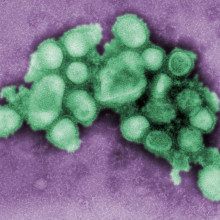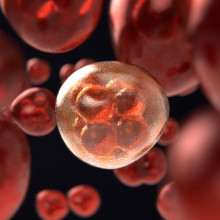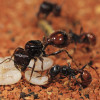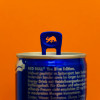Bird flu threat, and what the Romans really did for us
In the news podcast this week, the first human death from bird flu in the US has made virologists vigilant about its potential threat. Also, we learn about the potentially billions of tonnes of sequestered hydrogen on Earth that could be used for clean energy, and hear of the promising results in animals for new drugs for treatment resistant prostate cancer. Then, the unintended cognitive consequences of lead mining in the Roman empire, and question of the week takes us back to a time when all the continents were clumped together...
In this episode

00:59 - First human death from bird flu in the US
First human death from bird flu in the US
Ed Hutchinson, MRC-University of Glasgow Centre for Virus Research
The United States has recorded their first human death from bird flu. The patient - who had underlying health conditions - was taken to a hospital in Louisiana after contracting the H5N1 virus but deteriorated. The infection is now spreading in cows and even killing domestic cats. So what’s the risk for us? To find out more, we put in a call to Ed Hutchinson from the MRC-University of Glasgow Centre for Virus Research…
Ed - We've been concerned about H5N1 bird flu for about 25 years now. It's a virus which is capable of causing severe disease in humans as well as spreading in birds. But it's become a real issue in recent years where a new strain of H5N1 has started spreading really aggressively around the world through birds, starting in Asia and then through into Europe, Africa, North America, South America, Antarctica. It's everywhere now. It's caused enormous problems with wild birds, but it's also been very good at jumping from those birds into other species, particularly into mammals. The most surprising case so far has been in the United States, where it's not only infected dairy cows, but it's become a dairy cow virus. It's fully adapted to spreading among cattle. There's now this big outbreak of H5N1 in cattle in the US.
Chris - And when it gets into a cow, does it behave like it does in the bird or does it behave more like mammalian flu, the kind of flu that you and I get: a runny nose, sore eyes, and a high temperature.
Ed - This was a real surprise to virologists. The first surprise was that cows got infected at all because up to this point we would have said that cattle, for whatever reason, didn't tend to get influenza A infections. But the second surprise was the way it spread. The main thing it's doing in these dairy cows is it's infecting the udders and it's being shed in the milk at incredibly high levels. Now, if you pasteurise milk, that kills the virus. That's good news. But if you don't, the milk remains infectious. That seems to be a good part of how it's spreading among these cattle now.
Chris - And what are the implications for people, then? Are we worried that the cows might act as an interface, enabling the infection to jump more efficiently to us?
Ed - Yes. Against the backdrop of the fact that the virus is still circulating in birds, within cattle (these are animals which are obviously found in large numbers) you have two points of contact. You have people who are working with the cattle, dairy workers. If you can imagine a big dairy, there are lots of opportunities to come into contact with milk from these cattle. The other is consumption of unpasteurised dairy products. There's a subculture of drinking what's called raw milk, unpasteurised milk. We pasteurise milk for good reasons, for killing all sorts of pathogens. This adds another one to the mix. So we are concerned that both humans and domesticated animals like pets could be exposed to the virus that way.
Chris - And have there been many human cases via those roots?
Ed - It's unclear at the moment whether there have been human cases from the consumption of raw milk, but there have definitely been cases from occupational exposure in dairies. These have generally been conjunctivitis, people getting pink eye probably from the milk coming into their eyes. Also some respiratory infections. And there have been cases where farm cats have died, almost certainly because they've been lapping up milk around the dairy. What we've also seen in the US and Canada have been two really severe cases of human infection, both of which put people in hospital, one of which sadly recently resulted in the patient dying. But these cases did not come from cattle. These came directly from viruses and birds. We can tell that because the viruses they got are much more closely related to the viruses still in birds than to the viruses which are in cows. This highlights the fact that we've now got two different places to look when we're thinking about risks of H5N1 infection of humans.
Chris - Does this not nevertheless put us on alert that this particular virus, this particular form of H5, appears to be quite good at getting into a range of mammals, of which group of animals we're obviously a member, and this might be the first steps towards a full incursion of this becoming a human flu?
Ed - It absolutely does. There are plenty of reasons to be worried about the animals themselves from an ecological perspective and animal welfare perspective, but if we're just going to look at humans for now, adapting to new species is a really difficult thing for a virus to do but flu is unusually good at it. It's good for two reasons. One is that it can mutate really quickly and we could see signs of that in those two really severe human cases. But the other thing to be concerned about is that influenza viruses can breed with each other. They can swap genes back and forth between them. If two different viruses infect one at the same time - we're currently in the middle of a winter flu season in the US and there are loads of people being infected with influenza viruses which are already very good at infecting humans - there is this risk that you could have an H5N1 virus swapping genes with a virus which is already good at growing in humans and getting a head start to becoming a human virus that way.
Chris - So you end up with a kind of hybrid virus that looks like H5N1, something we don't recognise as a human population, we've never seen that before, but it's got the inner workings of a human flu that knows really well how to grow in our cells and to grow really efficiently and spread really well.
Ed - That's absolutely right. And most of the influenza pandemics we've seen over the last century have occurred that way. Most recently, the 2009 swine flu outbreak occurred by different influenza viruses breeding with each other.
Chris - What then should public health officials, doctors, et cetera, be doing to A) keep an eye on that and B) minimise the risk?
Ed - The most important thing you can do is to keep an eye on it, because at the moment there is not any evidence for human to human transmission. We're not talking about a human outbreak right now. What we're talking about is the need to minimise the risk of the virus and figuring out how to do that. That involves minimizing the chances of the virus learning its way around humans. What does that involve? It involves biosecurity measures. If you have farmed animals, trying to reduce the risk of them getting infected. If you are working with animals which could be infected, both monitoring and wearing appropriate PPE, and this is legitimately quite a challenging thing to do in big complex farms, but it's important that this is considered. I'm also very concerned as lots people are consuming raw milk in areas where H5N1 is spreading.
Chris - What about vaccines? They're our mainstay for preventing seasonal flu. Have we got vaccines that will combat this form of H5 and have we got them at the sort of scale it would take if this suddenly does start to take off?
Ed - This is a partial good news story. We obviously know how to make influenza vaccines and we also already have produced H5N1 vaccines. Indeed, the UK government has recently purchased an initial batch of vaccines for exactly that reason. What's also good news is that you don't have to have a precisely matched H5 vaccine to get some protection against a virus. Even if it doesn't give you complete protection, it might reduce the risk of severe symptoms or reduce the risk of you spreading it to other people. This is very similar to what happens with seasonal influence vaccines and why it's always worth getting them, even if they're not going to completely protect you against every risk of infection.

08:35 - Could sequestered hydrogen be clean fuel for the future?
Could sequestered hydrogen be clean fuel for the future?
Geoff Ellis, US Geological Survey
New model predictions suggest that Earth’s subsurface may hold billions of tonnes of natural hydrogen. Hydrogen is the most abundant element in the universe and can be a source of carbon-free energy. Burning it releases mostly water. But teasing it apart from natural compounds that contain it, like water or natural gas can be expensive and carry a carbon cost, which has been a deterrent to wide scale exploitation of hydrogen previously. But, geoscientists think that there may be vast reservoirs of the gas trapped beneath our feet, and a lot of it within reach. If they’re right, their findings suggest that geologic hydrogen could produce twice as much energy as all the proven natural gas reserves on Earth. I’ve been speaking to Geoff Ellis from the US Geological Survey…
Geoff - We had generally assumed that natural accumulations of hydrogen just couldn't form because it's a very small molecule and it's very diffusive. It leaks out through rocks in the subsurface and it's also readily consumed by microorganisms. There was an accidental discovery of an accumulation of almost pure hydrogen gas about a dozen years ago in the country of Mali in West Africa. As I learned about this discovery, I started to question this notion that maybe accumulations of natural hydrogen could form.
Chris - Presumably, if we were to go burrowing after hydrogen like that, it's not got the same implications as digging up fossil fuels, petroleum, coal, gas because there isn't a carbon footprint, apart from the extraction process, associated with it. It would be a clean form of, I suppose, fossil fuel.
Geoff - That's exactly right. Today the hydrogen that we get is actually predominantly made from fossil fuels. In the process of making a kilogram of hydrogen, we actually release about 10 kilograms of CO2 into the atmosphere.
Chris - I suppose we should point out that there are of course ways of making hydrogen in a non-carbon releasing way, that is, if you use a sustainable energy source to do it. But that is a drop in the ocean compared to where most comes from, isn't it?
Geoff - That's right. Today, very little of this clean hydrogen is being made. The technologies that we have do exist, but they're quite expensive. It's not really clear how we're going to get all this low carbon hydrogen that we think we're going to need.
Chris - How have you turned this into a tractable question/problem then?
Geoff - We looked at what we do know about natural occurrence of hydrogen on Earth. This is something that has been studied for many, many decades, mostly by biologists that are interested in the deep biosphere and life on other planets. We know that there are microorganisms that are living on hydrogen in the subsurface. Then there were some knowledge gaps that we had to fill in, so we used analogues from other things that have been well studied, things like petroleum systems. Through studies of petroleum, we know how gases migrate and trap and get accumulated in the subsurface. We were able to then borrow knowledge from those fields to fill in gaps to put together a global model of just how much hydrogen might actually be trapped in accumulations in the entire Earth's crust.
Chris - Before we come to how much, just tell us where then we would anticipate this hydrogen might be.
Geoff - The processes that are thought to be capable of generating the largest amounts of hydrogen tend to be associated with crystalline rock settings, iron rich rocks that are associated with the mantle underneath the Earth's crust that have been brought up near the surface, and also radioactive rocks. The radioactive decay of radiogenic minerals can actually split water and generate hydrogen. Actually at the mid ocean ridges today, we see the sea water being reduced and forming hydrogen, and also in many hydrothermal systems, hot springs and so forth, we find hydrogen gases there. These are, by the way, very different places from where we explore for oil and gas, so this can explain why we don't find hydrogen associated with petroleum.
Chris - And they're also, by the sound of it, within reach, some of these sources, potentially.
Geoff - Yes, absolutely. And in fact, this accidental discovery in Mali was only a hundred meters below the surface. So in fact, it's very possible that it could be very accessible.
Chris - Now, notwithstanding the fact this is a model, therefore it's got strengths and weaknesses - there are going to be knowns, there are gonna be unknowns - how much hydrogen might there be lurking within reach beneath the Earth's surface?
Geoff - The units that we refer to are million metric tons or megatons. We estimate that there could be anywhere from maybe just a few thousand megatons to potentially billions of megatons in the Earth's crust. The median, or most likely value, is on the order of around 5 million megatons. On the order of millions of megatons seems to be probably most likely.
Chris - And in energy terms, is that a meaningful amount? How would that relate to, for instance, the amount of energy that's locked up in natural gas that's exploitable at the moment?
Geoff - The other thing that we have to be aware of is that these millions of megatons are actually across the entire Earth's crust. We make no prediction about the distribution of that hydrogen, and almost certainly most of this is going to be inaccessible, it's just simply going to be too deep or too far offshore or in accumulations that are much too small that it could never be economically recovered. But as a thought exercise, I say let's assume that maybe if there are 5 million megatons in the subsurface, and if we could recover just 2% of that, that would represent 100,000 megatons. I did a quick calculation to see how much energy is in that, and it's roughly about twice as much energy as all of the proven reserves of natural gas on Earth. It seems that if we could recover just a fraction of what we think is down in the subsurface, it could actually be a substantial amount of energy.
Chris - It sounds to me like you're saying that your predictions are, the world actually is quite replete with hydrogen, but there's enormous uncertainty as to whether we can actually get at this, what would be a wonderful resource if we could access it. Is it even worth pursuing this, do you think?
Geoff - From my perspective, the answer is clearly yes, I think it is. There's enough potential here, and given what we know about other gases, about natural gas, about CO2, helium, hydrogen, it seems that it's quite likely that we could have accumulations of natural hydrogen in places that could be accessible and economically recovered. The key point is that we just simply have never looked for it.

15:51 - Stressing prostate cancer to death with drugs shows promise
Stressing prostate cancer to death with drugs shows promise
Adam Sharp, The Institute of Cancer Research
But first, researchers in London have found that prostate cancer that has become resistant to existing hormone therapies could be treated with an experimental a new drug. It’s called NXP800, it is currently already in clinical trials for ovarian and bile duct cancer, and it works by stressing out cancer cells to the point of killing them. Here’s Adam Sharp, a co-author on the study and leader of the Translational Therapeutics Group at The Institute of Cancer Research in London…
Adam - Over the past 10 to 15 years, we've developed many treatments that can help control prostate cancer and allow men that have advanced disease - that's disease that has spread beyond the prostate - to live for longer. But the biggest challenge we have is that after time, sadly, those treatments stop working because the cancer becomes resistant to them. What it does is it learns ways to overcome the treatments that we're giving to our patients, and it stops working and therefore the cancer continues to grow. In this work, we were really trying to develop new treatments that work through new ways that could maybe help patients that other treatments had stopped working for.
Chris - I suppose it's a bit like when bacteria become resistant to antibiotics, isn't it? It's that they have evolved ways to surmount whatever the blockade imposed by the drug is. How have you attacked this, then? How have you gone after flushing out new avenues that will clog the works up and stop these cancers, even though existing treatments can't?
Adam - The cancer cells are very stressed and they're stressed because they do grow uncontrollably. What that means is the cancer cell needs to protect itself. One way that it does that is it uses a particular family of proteins, the chaperones. They just really protect the cell from that induced stress that the cell is undergoing so that it survives rather than dies. What we did in this study was we actually looked at a drug that had been discovered and developed here, but really tries to stop these chaperones from working and increases the stress that the prostate cancer cell is under. What we wanted to do was to actually decide, if we were to give this drug to our cancer cells, would they be under so much stress that they no longer could survive? Would they either reduce their growth or even die? That's what we really wanted to look at in this study.
Chris - How did you do it?
Adam - My colleague, professor de Bono, has a huge number of patient samples. We first wanted to ask the question, these chaperones, these molecules in the cancer cell, do they make the cancer cell more happy? We actually identified that patients that have more of these chaperones in their cancer cells sadly did worse with current treatments. We then wanted them to take this drug to see whether or not it worked. It's meant to increase the stress or reduce those chaperone proteins that the cell likes to increase the stress. We treated prostate cancer cells in our labs and we also treated many tumours that have come from prostate cancer patient samples, and these specific cancer cell samples were resistant to our current treatments. What was exciting to see was that with this drug, these actual cancer cells started to die. Then what we did following that was we tested it in animal models as well to show similar effects to what we were seeing in the lab cancer cells.
Chris - Effectively you're robbing the cancer cells of a defence they rely on, so they become stressed to the point of toxicity. They just die. But what's to stop them just evolving a defence against the drug so they can switch those defences back on, as it were, and just do what they've already done for the other treatments. Are we just kicking the can down the road a bit here?
Adam - I think that's a really important statement. The challenge, as you've said, is the cancer will evolve ways to overcome resistance to the new drugs that we're also developing. So alongside developing those drugs in themselves, we also now, following from this work, start to look about what drugs we could put the new drug with to maybe overcome the mechanisms of resistance that occur.
Chris - How selective is the drug for prostate cancer cells? Because obviously these proteins that you are robbing the cancer cells of play a really important role in protecting healthy cells as well. Are there not potentially really serious side effects from doing this?
Adam - That's a really important question. The way that we would describe it is actually cancer cells themselves can become more sensitive to these treatments because they have more reliance on those chaperones. A normal cell that isn't as stressed doesn't actually require them as much as a cancer cell. What we hope is that that's what can deliver us the therapeutic window.
Chris - Could this treatment also become a way to make other treatments even more effective? Because when you are treating prostate cancer with, for example, radiation, that's really stressing cells. If you give a drug at the same time, that makes them even more vulnerable. Does that make the power of the radiation the killing effect even more potent and therefore you could get away with say, lower doses, or get an even better response in the cancer so the person has a better outcome?
Adam - Fantastic question, and I think that's what I actually hope more about this paper: not so much our work, but also bringing interest to the field. There has been some great work from other labs that have already shown that increasing the stress response can sensitise to radiotherapy.
Chris - At the moment you've done this in a dish and you've done it in these experimental animals. How close are we now to being able to do clinical trials? Do you foresee this being a relatively easy route into the clinic?
Adam - This work is done in preclinical models in the lab and is exciting, but of course that's still a long way from showing that it works in prostate cancer patients in the clinic. What's exciting is the drug itself has been developed and it's now being given to patients with advanced ovarian cancer and cancer of the upper GI tract, and therefore the clinical trials are already running. What I hope is also exciting enough about this work is that it will make our collaborators in biotech and industry start to think about prostate cancer as another potential indication for this drug.

22:47 - Roman lead pollution caused cognitive decline in citizens
Roman lead pollution caused cognitive decline in citizens
Joe McConnell, Desert Research Institute
If Monty Python’s Life of Brian has taught us anything, it’s that we have the Romans to thank for pretty much everything. But - it seems - it may not have all been entirely beneficial. Indeed, new research suggests that intense lead mining at the height of the Roman Empire may have engulfed Europe in widespread pollution which - in turn - contributed to the cognitive decline of the population. Joe McConnell at the Desert Research Institute in Reno has been telling me all about the study…
Joe - I study ice cores. In this study we used three ice cores, two from the Greenland ice sheet, and one from the Russian Arctic. These were collected a long time ago, over the last 20 years, by many of my European colleagues. We analysed these in my laboratory at extremely low levels, but we can use those variations in those very low levels to look at changes in emissions of pollutants.
Chris - And how do you know when they relate to in time, these ice cores?
Joe - We count annual layers in the chemistry. In my lab, we measure about 30 different chemical species all at the same time, looking at depth resolution. Just like tree rings, we can count those annual layers starting at the top and just count them backwards thousands of years. Then we use things like known volcanic eruptions, and there happens to have been one in Alaska in the year 43 BCE that we can tie directly to the tree ring series and to all these different ice cores.
Chris - And the ice captures a snapshot of what the air was doing when that bit of ice got made at that particular point in time. Is that the rationale for doing this?
Joe - Absolutely. So there are these little things called aerosols, or little particles and droplets in the air all around us all the time, and they come from things like forest fires or pollution or volcanic eruptions, desert dust, sea spray, things like that. Those impurities are captured by falling snowflakes, or by raindrops, and deposited in the snow or in this case on the ice sheet.
Chris - And what does the lead footprint look like? Is it significant?
Joe - It's easily detectable, and one of the reasons that we focus on lead besides the health implications is that humans in their early mining and smelting created a lot, or emitted a lot of lead. The background of lead in the natural environment is quite low, but humans, because of our mining and smelting, really put out a lot of it. The signature of human impact is quite clear in these ice cores in terms of lead.
Chris - Was it chiefly the Romans 2000 years ago that were playing with lead? So you can say, well, it was them that have made the signature that you can see in these ice cores mapping onto that time point, or were other humans around the place, other races, were they also using lead?
Joe - Historians and archaeologists tell us that the primary sources would've been the Roman Empire, and then there was quite a bit of activity in China using atmospheric models and then with the isotopes of the lead itself, we can evaluate where the lead must have been coming from. In this case, where these ice cores are located, the sensitivity of the ice, meaning how sensitive the ice core record is to emissions, is about 10 times greater for Europe than it is for China. So it's not impossible that we're seeing some lead from China, it's just that the emissions would have to be at least 10 times greater to equal the same amount of emissions from Europe. Then, finally we can use these isotopes and what we find is that the lead deposited in Greenland has a similar isotopic characteristic as the ore bodies in Southern Europe.
Chris - How do you then relate what the ice is saying was there to what the concentration of where the people were must have been? So in other words, if you were a Roman either living in a town or working in one of these settlements that was producing this, how much lead would you have been exposed to, do you think, based on what the ice is telling you?
Joe - Somewhat surprising for me at least, was how widespread the pollution was. The atmospheric modelling suggests that it basically extended over the entire Roman empire, and that it goes all the way from North Africa to what is now Germany and all the way over to the Black Sea.
Chris - How would that relate to, if we wound the clock back just say a hundred years, because we were using a lot of petrol that was all leaded until into the eighties. We were all using leaded fuel because it was better for engines. How would our lead pollution in that era compare with what the Romans were doing? Were we worse than them effectively or not as bad?
Joe - No, we were definitely worse. The blood lead levels that would have resulted from this air pollution were about three times higher during the late 1970s, at least in the US, than they were during the Roman period. As you mentioned, lead has really been cleaned up in the last 20, 30, 40 years since passage of things like the Clean Air Act in the US and similar legislation around the world. The Romans were experiencing about three times the exposure the children today are experiencing.
Chris - But of course children, when I was a child, were probably getting a much higher dose than a Roman child would.
Joe - Absolutely and there was cognitive decline and other health impacts as a result.
Chris - We know that there are studies tying lead pollution to human exposure in the more modern era. So you can presumably back extrapolate that to what was going on in ancient Rome and try and make some kind of guesstimate as to what kind of impact it might have had on general health and cognition.
Joe - Maybe about two and a half to three points. Keep in mind that the average IQ is a hundred, so that means you're dropping about 2 to 3% of your IQ. It might sound like a small number, but when it's applied to the entire population, I would think it's pretty significant.

28:32 - What was on the other side of Earth to Pangea?
What was on the other side of Earth to Pangea?
James Tytko investigates...
If you go back 200 to 300 million years ago to the Permian and Triassic periods (which is fairly recent on geological time scales believe it or not) most of the Earth’s landmass was clumped together on one side of the planet, just as you point out. This is known as Pangea, and occurred by chance movements of the tectonic plates which make up the outermost layers of the Earth. Next time you look at a map, look at the West coast of Africa and the East coast of South America: if it looks like they could fit together, it’s because they did!
So, naturally, on the other side of the globe to Pangea was a vast global ocean known as Panthalassa. But what do we know about this huge body of water?
Well, not an awful lot since the oceanic crust underneath Panthalassa was largely subducted. This is a process whereby the denser oceanic crust slides underneath the less dense continental crust as tectonic plates drift into each other over time. This makes it harder for geologists to study.
We can say more about Pangea, where much of the supercontinent is known to have been arid. You can see the red desert sandstones deposited from this time in many places in the UK today.
We can also say that the effect of having one large ocean basin across much of the world, rather than multiple smaller ones we see today, would likely have had a large bearing on deep sea circulation patterns, which are crucial to regulating the global climate and distributing the uneven balance of sunlight which strikes the Earth. That would account for the hotter summer, drier winters, and all round dryness of much of Pangea.
To add to these hostile conditions, 250 million years ago, an eruption of huge volumes of magma in modern Siberia above a hot upwelling plume of material in the Earth’s mantle made the Earth’s climate very hot and unpleasant, and caused the biggest mass extinction in the Earth’s history.
Pangea was eventually broken up by the continents moving apart, and one of the major boundaries along which this happened became the Atlantic Ocean.










Comments
Add a comment